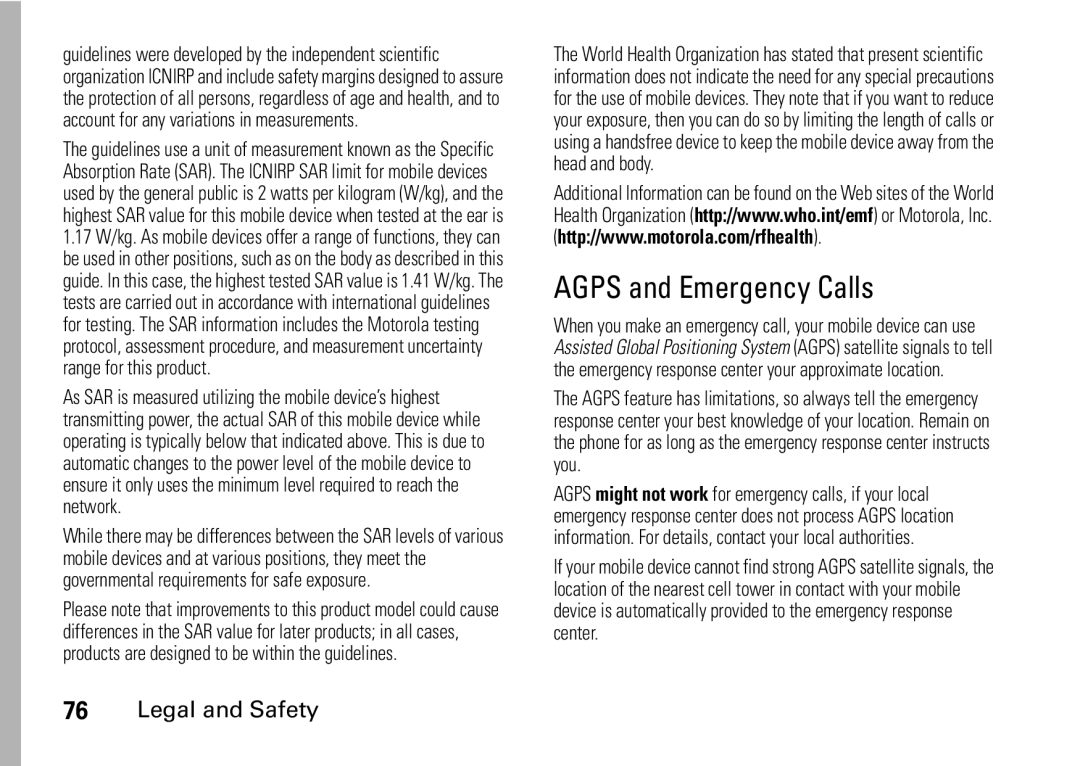guidelines were developed by the independent scientific organization ICNIRP and include safety margins designed to assure the protection of all persons, regardless of age and health, and to account for any variations in measurements.
The guidelines use a unit of measurement known as the Specific Absorption Rate (SAR). The ICNIRP SAR limit for mobile devices used by the general public is 2 watts per kilogram (W/kg), and the highest SAR value for this mobile device when tested at the ear is
1.17W/kg. As mobile devices offer a range of functions, they can be used in other positions, such as on the body as described in this guide. In this case, the highest tested SAR value is 1.41 W/kg. The tests are carried out in accordance with international guidelines for testing. The SAR information includes the Motorola testing protocol, assessment procedure, and measurement uncertainty range for this product.
As SAR is measured utilizing the mobile device’s highest transmitting power, the actual SAR of this mobile device while operating is typically below that indicated above. This is due to automatic changes to the power level of the mobile device to ensure it only uses the minimum level required to reach the network.
While there may be differences between the SAR levels of various mobile devices and at various positions, they meet the governmental requirements for safe exposure.
Please note that improvements to this product model could cause differences in the SAR value for later products; in all cases, products are designed to be within the guidelines.
The World Health Organization has stated that present scientific information does not indicate the need for any special precautions for the use of mobile devices. They note that if you want to reduce your exposure, then you can do so by limiting the length of calls or using a handsfree device to keep the mobile device away from the head and body.
Additional Information can be found on the Web sites of the World Health Organization (http://www.who.int/emf) or Motorola, Inc. (http://www.motorola.com/rfhealth).
AGPS and Emergency Calls
When you make an emergency call, your mobile device can use Assisted Global Positioning System (AGPS) satellite signals to tell the emergency response center your approximate location.
The AGPS feature has limitations, so always tell the emergency response center your best knowledge of your location. Remain on the phone for as long as the emergency response center instructs you.
AGPS might not work for emergency calls, if your local emergency response center does not process AGPS location information. For details, contact your local authorities.
If your mobile device cannot find strong AGPS satellite signals, the location of the nearest cell tower in contact with your mobile device is automatically provided to the emergency response center.
